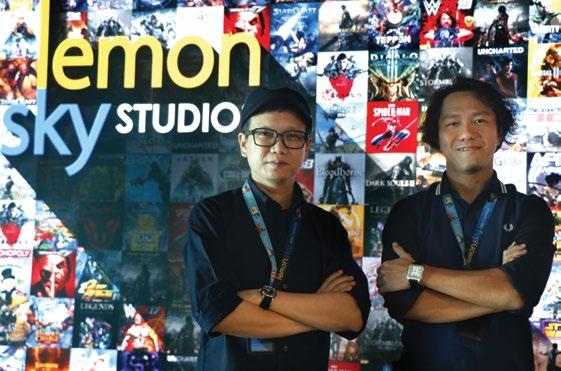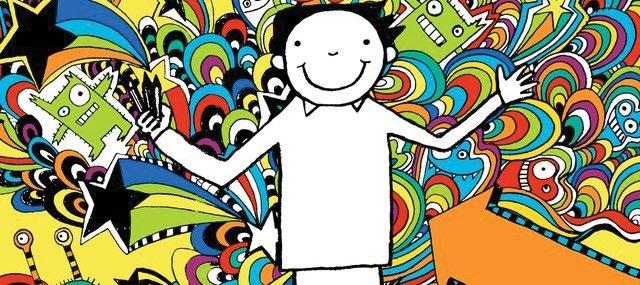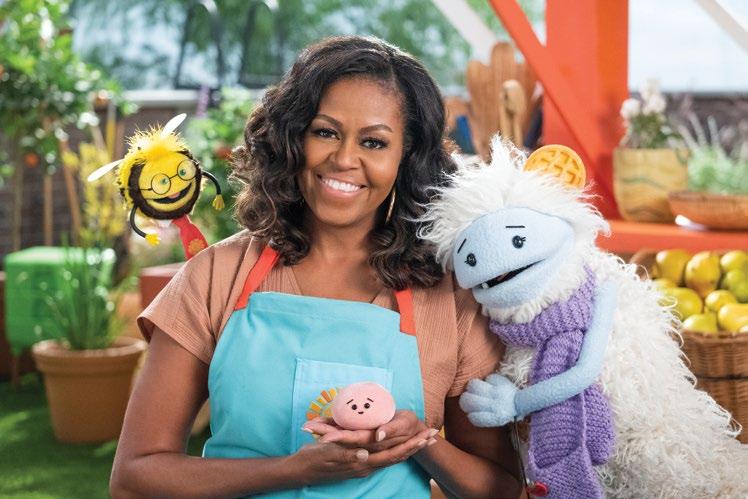
11 minute read
Palate Cleanser
Michelle Obama and her co-stars teach kids about cooking and nutrition.
Six Point Harness’s creative director Musa Brooker gives us a taste of his delicious work on Waffes + Mochi.
Netfix’s charming live-action puppet series Waffes + Mochi has been one of the unexpected delights of the spring season. Produced by showrunners Erika Thormahlen and Jeremy Konner, Tonia Davis, Priya Swaminathan and Barack and Michelle Obama, the 10 x 20-minute show features former First Lady Michelle Obama and two delightful puppet friends (named Waffes and Mochi) as they travel the world and teach young viewers about cooking and healthy eating. In addition to guest stars such as Samin Nosrat, José Andrés, Massimo Bottura and Preeti Mistry, the show features over a hundred animated segments, produced by L.A.'s Six Point Harness under the direction of the studio's creative director Musa Brooker.
A stop-motion animation veteran whose numerous credits include shows such as Robot Chicken, Tumble Leaf, SpongeBob SquarePants and Titan Maximum, Brooker began work on the series in the fall of 2019. He says he was very pleased when producers Swaminathan and Konner contacted him to join the project. “I was excited when they reached out to me about the project,” he recalls. “Separately, around the same time, I was also contacted by Six Point Harness as I knew the head of production Barbara Cimity, as we worked together at Stoopid Buddy.”
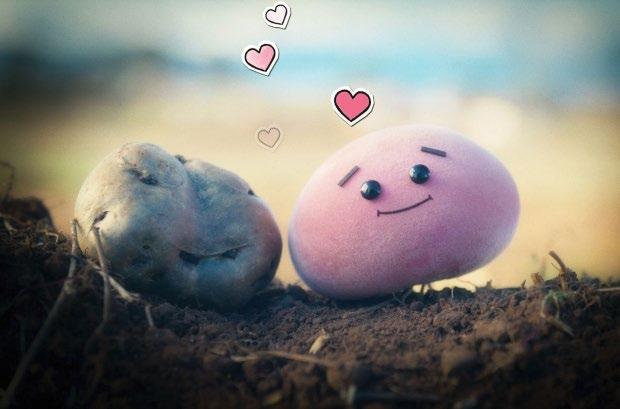
Diversity Wins
Brooker says what was clear from the very beginning was that producers had a very defnite idea about the role animation was going to play in the series. “They wanted to have ani-
Visual Treat: The team at Six Point Harness worked their magic on Mochi’s mouth. mation integrated throughout the show, so we helped them develop the different styles and visuals they were looking for,” he explains.
The director says he got his initial cues by attending the show’s writers room. “Because none of the writers came from an animation background, I listened to what they were looking for and understood the genesis of their ideas,” says Brooker. “We had a lot of different style references. There was a cool wall in the room of images and references that they loved, which looked like this giant mood board. We were able to work together to pull from a lot of visuals both from animation history and contemporary work. The producers wanted different visuals for the different segments — we were going for the feel of a collection from indie animators.”
Brooker and his team of about 30 designers, animators and some freelance vendors worked on the show’s animated segments for about a year. “We animated Mochi’s mouth, and he’s in every episode,” he points out.
Other animated spots feature the “Taste Buds” who live inside Mochi’s mouth. He notes, “I really enjoyed working on the Buds. We also did the ‘pizzazz lines’ (the on-screen painted lines) that play around with the live-action elements. There are these patches and animated transitions created for the end of the scenes. We used a variety of animation tools, from drawing and designing in Photoshop to animating in Harmony and Adobe Animate, and some After Effects for compositing.”
Quick Adapters
Brooker, who has also been the creative director at Six Point Harness and is overseeing
‘To capture the different favors of the places Waffes and Mochi visit, Higher Ground wanted us to capture different favors of animation. The different styles of animation refect the varied styles of food and nutrition found around the world, and it’s been a great joy to work on a project designed to broaden both the minds and palates of young viewers.’
— Animation director Musa Brooker
many of the studio’s upcoming projects, says one of the challenges of the production was adapting to the pandemic shutdown in March. “It all happened relatively quickly. Our studio CEO Brendan [Burch] made the decision to have anyone who felt like working from home do so on a Friday, and on Monday, the whole city shut down. We didn’t miss a beat. By Tuesday that week we were up and running. But there’s something amazing about being with other artists in a studio. When you work from home, you have to set up Zoom meetings versus just walking over to someone’s desk to share something.” The director says diving back to the world of 2D animation after years of working in stop-motion was also interesting. “So many of the same principles apply, so it was fun to go back to the world of 2D. Collaboration is always a challenge as you want to facilitate ideas and make sure everyone’s ideas are heard. It’s all about making something that is greater than any collaborator can do individually. It was exciting and meaningful to places where I hadn’t gone before.” Of course, we had to fnd out what it was like to work with Michelle Obama. Unfortunately, Brooker said because he didn’t interact with the puppets, he didn’t get to meet the former First Lady in person. “I hope to meet her when we get a second season,” he says laughing. “I love everything about this show. It was really exciting to be part of a project that is trying to do good and is thoughtful, entertaining and fun to watch as well. For me, personally, it was a chance to return to 2D animation, which is where I frst got my start. It is very rare when you get to work and play in all these different styles for the same project.” ◆

You can watch Waffes + Mochi on Netfix. To fnd out more about Six Point Harness and its projects (which include Cosmos: Possible Worlds, Season 2 of Lazor Wulf and Amazon’s Guava Island), visit sixpointharness.com.
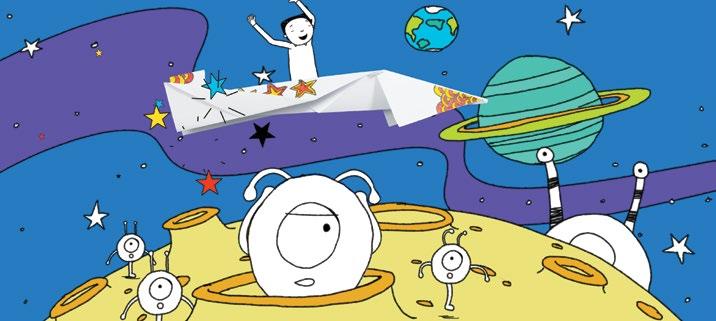
CONTINUED FROM PAGE 42 never had a conventional script to work from but had the storyboarding talents of Amanda Aiken and her team to help guide the way. Constantly revising and adapting as the various segments dictated their own length and rhythm.”
Making it Modular!
Anderson, an animation veteran whose credits include 64 Zoo Lane, The Imp, Wendy and Dennis and Gnasher, says the biggest challenge was trying to work out the right format for the show. “Once we had cracked that and found a partner in Sky, who understood what we wanted to do, then it was mainly down to the creative/production challenges of wrangling everything,” he notes. “That, of course, was then completely turned on its head by the pandemic — but by that stage we had all bought into the idea and it was then a question of how do we make this work?! The show offcially started production in March of 2020. About 50 people worked on the show, and the animation was done using Toon Boom and After Effects (for the motion graphics).
Anderson says one of the reasons the property has been so popular and timeless is that Pichon (who is also producing and appears on camera) constantly strives to make each book better than the last in some unique way. “She knows the world and the characters better than anyone else in the world and has to work hard to ensure that she keeps her top spot, as there are lots of kids who have immersed themselves in the world and are little experts,” he notes. “The character Tom Gates connects with children in a really wonderful way. He and his friends are all really lovely and funny — even the annoying ones! They enjoy being at school (mostly); they love their families — even if they can be challenging — and they have wonderful imaginations and the capacity to constantly make us smile and laugh.”
Now that Tom Gates is beginning its smallscreen adventures, Anderson says he’s proud of what he and his team have delivered. “I really love that we have created something which is totally complimentary to the spirit, values and character of the books — but at the same time, we have created something unique and original in its own right,” he admits. “We’ve created a whole new approach and had to problem solve, devise and work around all kinds of creative and production challenges, but we managed to deliver a series of episodes that kids seem to love and devour avidly. I love that we managed to bring together a disparate group of hugely talented people who’ve mostly never seen one another — except on a Zoom call — and make this amazing thing! In a pandemic, for Pete’s sake!” ◆
The Wonderful World of Tom Gates is currently
available on Sky Kids.
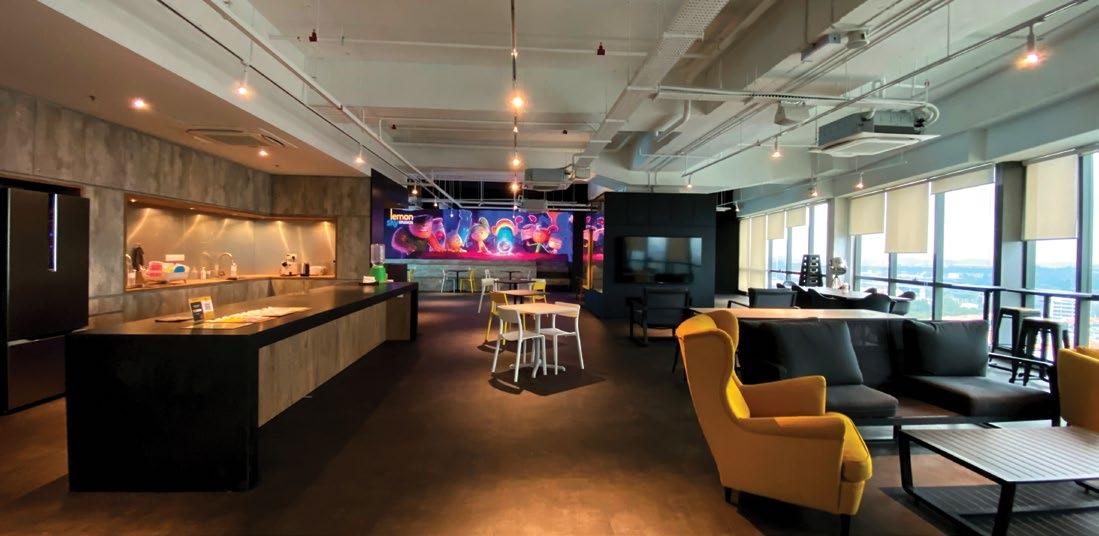
The Sky’s the Limit for Lemon Sky
The renowned Malaysian animation studio shares recent highlights and discusses the success of original IP, AstroLOLogy.
We recently had a chance to speak with Ken Foong, Chief Creative Ofcer at Lemon Sky Studios about the thriving animation studio in Kuala Lumpur. The Malaysian studio specializes in 3D character animation with a wide roster of clients who need high-quality animation and CGI for both long-form and short-form content as well as games. “We are a studio that is capable of adapting to a multitude of diferent art styles,” says Foong. “As we deal with clients from all parts of the world especially the U.S. and Japan, it is crucial that we are versatile when it comes to the various directions that they are looking to execute. Since our inception, we have worked with clients from all around the globe including Nickelodeon, DreamWorks, Disney, Toei Animation, Nelvana and many more.” Lemon Sky currently has a team of about 350 people who work on both animation and game production. “From Line-producers to concept artists, 3D modelers, rigger , animators, vfx artists, lighting artists and technical artists, we have a team that specializes in every step of the animation production chain,” notes Foong. “We use a wide variety of tools depending on the project and the scope of work required. While softwares like Zbrush, Maya, Houdini FX, Adobe and real-time development platforms such as Unity and Unreal Engine are commonly used in the studio, we also often work with our clients’ proprietary engines or development platforms in order to fulfll the client’s brief.”
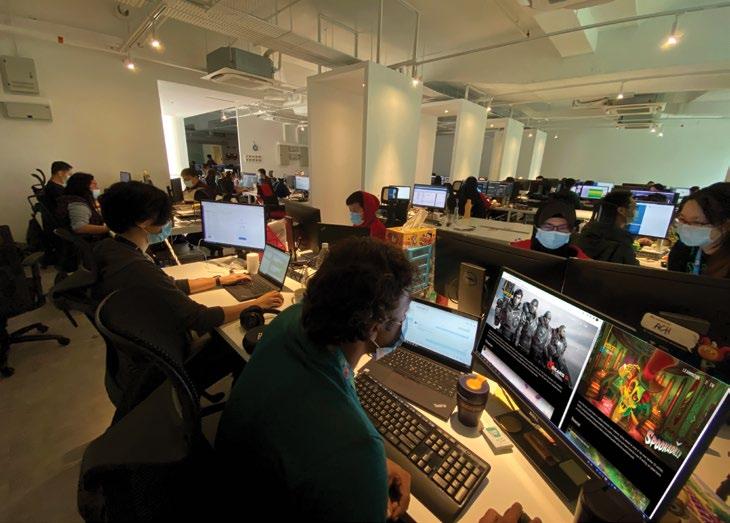
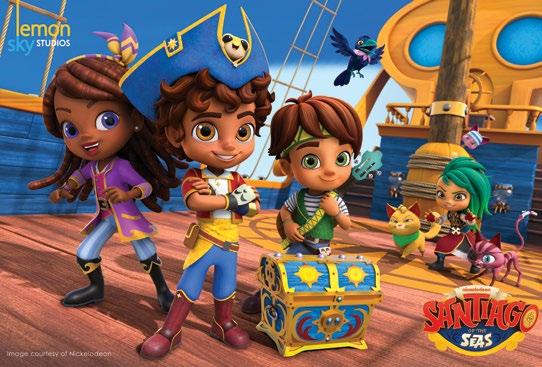
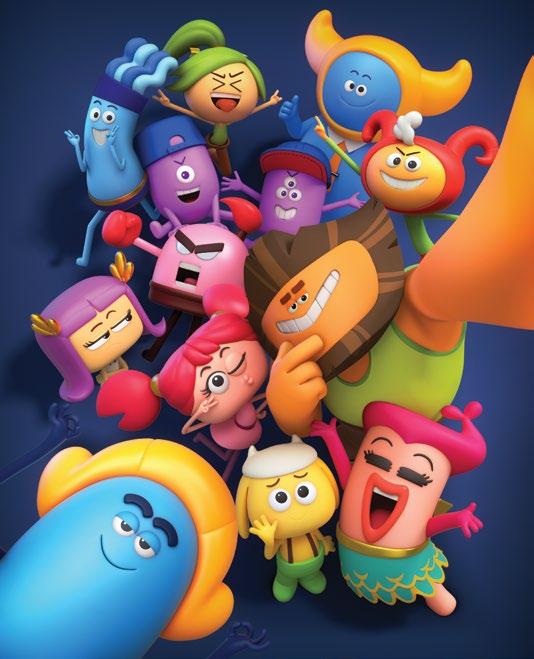
The Nickelodeon Connection
One of the studio’s most recent projects is Nickelodeon’s acclaimed preschool series Santiago of the Seas. “Niki Lopez’s vision for the animated series was something we were excited to bring to life,” says Foong. “The stakes were raised even further when we were hit with the global pandemic in the middle of production. The team made us proud though, pulling through with remarkable results. As Lopez points out, “When the pandemic hit, we were in the middle of producing the series and were not sure how much it would impact the production. Lemon Sky Studios were quick to come through with solutions though. I love the way they worked with us throughout the process. The culture within that studio is so collaborative and energetic. They truly bumped up the quality tenfold.” Foong says the studio is also working on an animated comedy series for Netfix using Unreal Engine. “We get to play around with yet another style of animation art,” he says. “We are also looking forward to working with DreamWorks on one of our most current projects.” According to the CCO, Lemon Sky is a studio that not only services the animation industry but also the world of video games. “We are honored to be able to work with big names in both industries. It is an extremely fortunate position to be in as we get to fex our creative muscles and we work on projects that cover all aspects of the creative industry. In addition to this, we have developed our very own IP and we are working towards developing our very own games as well.”
Good Signs
One of the studio’s hot new original shows is AstroLOLogy, a series that was developed by
Lemon Sky Development (LSD), a division that was initiated to act as an incubator for new and exciting IP ideas. Foong explains, “After going through hundreds of ideas at our very frst pitching session, we fnally landed on AstroLOLogy. We saw a gap in content that was inspired by star signs and we decided to take a shot at it. This 288 x two-minute series is a slapstick, non-dialog comedy that allows us to tap into each sign’s distinct characteristics.”
Since its launch on YouTube, AstroLOLogy has accumulated 400 million views, reaching audiences worldwide. “We are happy to announce that we are close to reaching the 1 million subscriber mark,” says Foong. “LSD actively compiles and assesses ideas for new IPs, and we have a few more in the pipeline for development.”
So who is the perfect partner for Lemon Sky? Foong responds “I guess we look for partners who have the right chemistry, if I can call it that. Naturally, we want partners that are open to ideas, value art and can communicate well with us. More than that, though, we look for partners that can challenge us to be better. Allow us to try new art styles and work together to make good art!”
As one of the pioneers in the animation industry, Lemon Sky has witnessed the remarkable growth in the feld over the past two decades. “Laying down the foundation is no easy feat,” says Foong. “Along the way we have defnitely encountered hurdles that we needed to overcome and we saw many other studios close down along the way. Twenty years later, we are grateful to have made it this far. It is wonderful to see so many passionate people in the industry that are working hard to make the industry stronger and better. While we have come a long way, we still have miles to go.”
For more information, visit www. lemonskystudios.com
